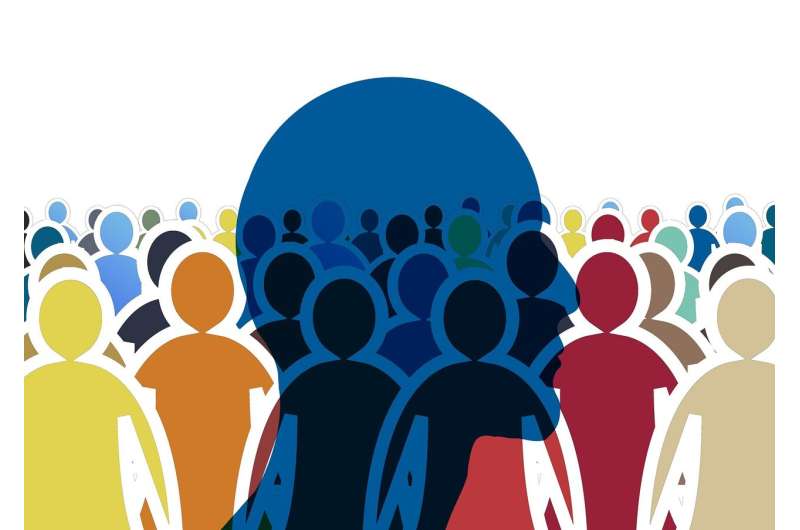
Credit: CC0 Public Domain
We all suffer from social anxiety at some point. The nervousness we feel before giving a speech is one example. However, some people have more social anxiety than others and limit their social engagement due to excessive chronic fear of being embarrassed or humiliated. Although such social anxiety is common in both adolescents and adults, it is rarely diagnosed and treated.
In a new book Titled “Social Anxiety: Hidden Fears and Shame in Teens and Adults,” Thomas E. Brown, a clinical professor of psychiatry and neuroscience at the University of California, Riverside’s School of Medicine, explains how social anxiety can limit friendships and lead to loneliness and depression. The book, written with a colleague and just released by American Psychiatric Association Publishing, offers 22 case studies highlighting 11 adults and 11 teens who have various types of social anxiety, as well as related conditions, such as attention deficit hyperactivity disorder (ADHD), depression or autism.
“Social anxiety is a persistent part of a lot of people’s thinking about what other people would think of them,” Brown said. “It’s like what my mother, father, husband, best friend, pastor or other people in the community would think of me if they knew what I’ve done or what I’m thinking or what I wish I could do. Sometimes it has to do with specific fears about information that might be made public. Sometimes I worry about what my parents would think of my actions if they were alive and could have known about them.”
According to available data in 2012 in the United States, the lifetime prevalence of social anxiety for people aged 13 to 17 was 11% for women and 6% for men. The lifetime prevalence for US adults aged 18 to 64 was 11% for women and 14% for men.
“Social anxiety disorder is too often under-recognized by physicians, psychologists and other mental health professionals,” Brown said. “There are a few people talking and writing about it right now. But there just isn’t a lot of empirical research on it. And many people never tell anyone about their problems with social anxiety, including their therapists.”
Brown explained that according to the Diagnostic and Statistical Manual of Mental Disorders, a handbook that serves as a guide for American and other health care professionals in diagnosing mental disorders, social anxiety negatively affects people in several ways: higher school dropout rates, higher unemployment, lower socioeconomic status and a greater likelihood of remaining single or getting divorced.
“Despite these challenges, only about half of people with social anxiety ever seek treatment for it,” Brown said. “Many people are embarrassed by their fears. Typically, people who seek treatment for social anxiety do so after 15 or 20 years of experiencing their symptoms. Some social anxiety is hereditary. It can run in families. It can also be learned in a family that is overprotective.”
Brown added that adolescent girls who develop breasts much earlier than their peers are often insecure and worried about what people will think of them. For adolescent boys, it’s more a question of height and when they have to undress in a locker room.
“That kind of anxiety often gets in the way of dating and romantic relationships,” he said. “For example, socially anxious college students report fewer interactions with the opposite sex. Some people have a lot of anxiety about their sexual performance. They think, ‘Can I turn my sexual partner on? Am I attractive to them?'”
According to Brown, fears related to social anxiety are usually unfounded.
“There are people who are just very anxious and get nervous very quickly in any situation where there is even a little bit of ambiguity,” he said. “Psychotherapy, interventions and prescription medications are ways to reduce social anxiety.”
Brown, an expert on ADHD, grew up in Chicago. He received his bachelor’s degree from Knox College in Illinois and his doctorate from Yale University. He was invited to join the clinical faculty at Yale Medical School, where he taught and saw patients for 20 years. After his wife died in 2014, he moved to California three years later to open his own clinic and be near his adult children and grandchildren. In February 2022, he was named a clinical professor in the UCR Department of Psychiatry and Neuroscience.
Brown has published seven books on various aspects of ADHD, many of which have been translated into foreign languages. Written for a lay audience, Social Anxiety: Hidden Fears and Shame in Teens and Adults is his first book on social anxiety.
“I hope that readers of this book and their family members and friends who struggle with social anxiety will understand that they can seek help right away, rather than having to wait 15 or 20 years before seeking help, as many people do,” he said.
More information:
www.perlego.com/book/4466458/s …teenagers-and-adults-pdf
Quote: New book addresses a largely ignored problem: social anxiety (2024, July 23) Retrieved July 23, 2024 from https://medicalxpress.com/news/2024-07-largely-problem-social-anxiety.html
This document is subject to copyright. Except for fair dealing for private study or research, no part may be reproduced without written permission. The contents are supplied for information purposes only.
 Healthy Famz Healthy Family News essential tips for a healthy family. Explore practical advice to keep your family happy and healthy.
Healthy Famz Healthy Family News essential tips for a healthy family. Explore practical advice to keep your family happy and healthy.


